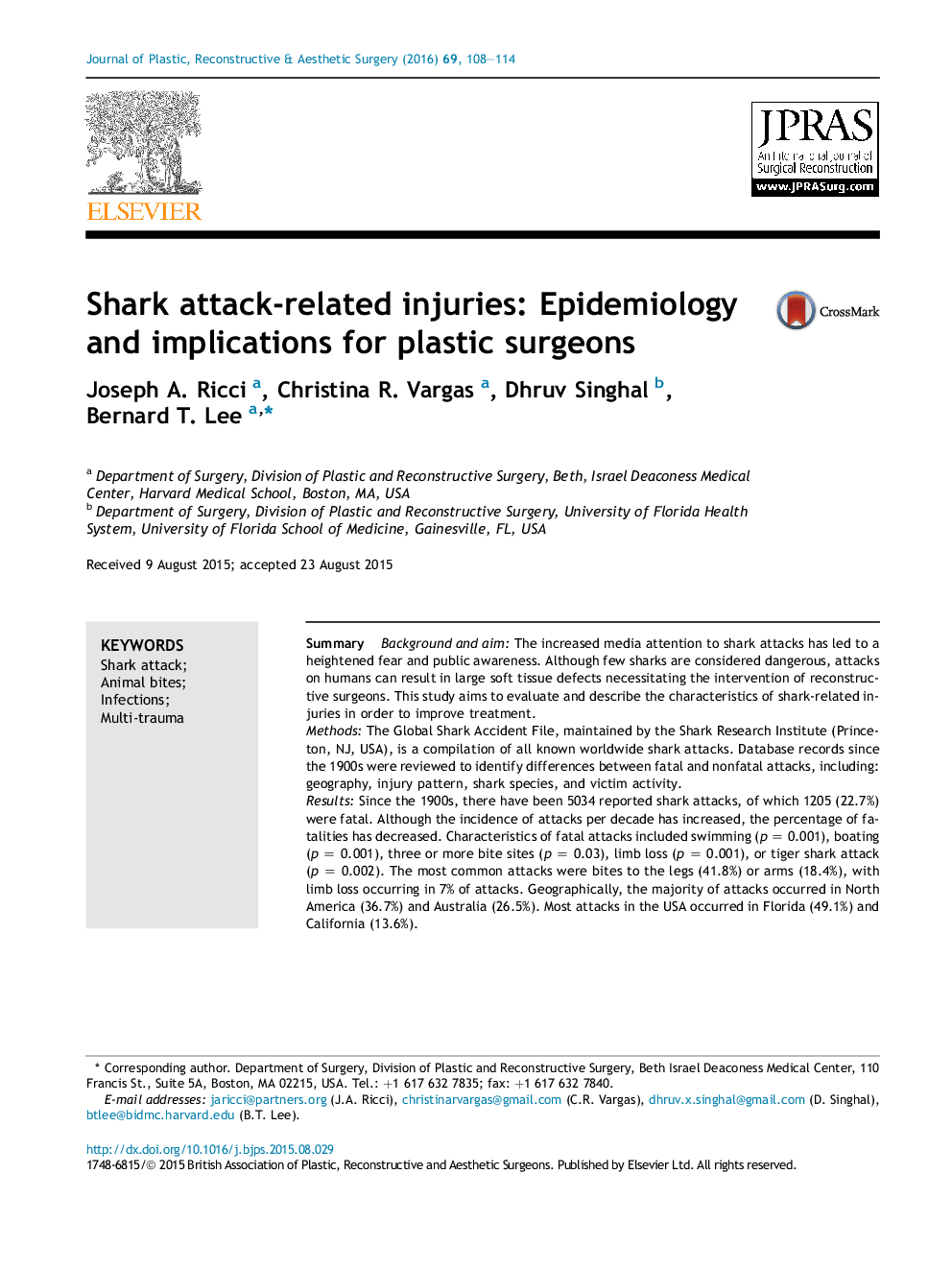| Article ID | Journal | Published Year | Pages | File Type |
|---|---|---|---|---|
| 4116984 | Journal of Plastic, Reconstructive & Aesthetic Surgery | 2016 | 7 Pages |
SummaryBackground and aimThe increased media attention to shark attacks has led to a heightened fear and public awareness. Although few sharks are considered dangerous, attacks on humans can result in large soft tissue defects necessitating the intervention of reconstructive surgeons. This study aims to evaluate and describe the characteristics of shark-related injuries in order to improve treatment.MethodsThe Global Shark Accident File, maintained by the Shark Research Institute (Princeton, NJ, USA), is a compilation of all known worldwide shark attacks. Database records since the 1900s were reviewed to identify differences between fatal and nonfatal attacks, including: geography, injury pattern, shark species, and victim activity.ResultsSince the 1900s, there have been 5034 reported shark attacks, of which 1205 (22.7%) were fatal. Although the incidence of attacks per decade has increased, the percentage of fatalities has decreased. Characteristics of fatal attacks included swimming (p = 0.001), boating (p = 0.001), three or more bite sites (p = 0.03), limb loss (p = 0.001), or tiger shark attack (p = 0.002). The most common attacks were bites to the legs (41.8%) or arms (18.4%), with limb loss occurring in 7% of attacks. Geographically, the majority of attacks occurred in North America (36.7%) and Australia (26.5%). Most attacks in the USA occurred in Florida (49.1%) and California (13.6%).ConclusionsAlthough rare, shark attacks result in devastating injuries to patients. As these injuries often involve multiple sites and limb loss, this creates a significant challenge for reconstructive surgeons. Proper identification of the characteristics of the attack can aid in providing optimal care for those affected.
